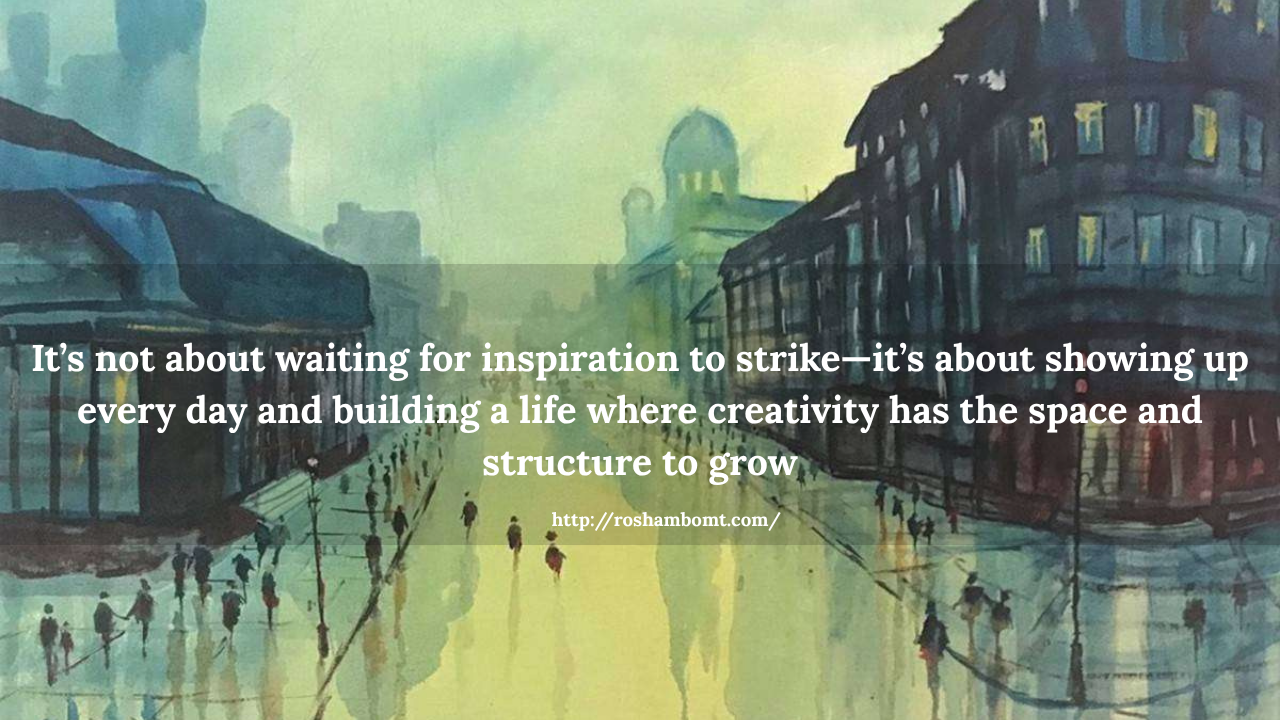 The image of an artist waiting for inspiration to strike before diving into their craft is a common romanticized stereotype. But for many modern artists, creativity isn’t just a fleeting moment of genius—it’s a daily practice, carefully cultivated through routine, intention, and discipline. While their lives may still hold spontaneous bursts of inspiration, it’s the structure around those moments that allows creative ideas to truly flourish.
The image of an artist waiting for inspiration to strike before diving into their craft is a common romanticized stereotype. But for many modern artists, creativity isn’t just a fleeting moment of genius—it’s a daily practice, carefully cultivated through routine, intention, and discipline. While their lives may still hold spontaneous bursts of inspiration, it’s the structure around those moments that allows creative ideas to truly flourish.
Starting the Day with Purpose
Many modern artists begin their day with mindfulness and reflection. Whether it’s journaling, sketching, or simply sipping coffee while planning out the hours ahead, these quiet rituals help ground them mentally. Starting the day with clarity is crucial, especially when juggling the multiple roles most artists take on—creator, marketer, businessperson, and sometimes teacher.
Some adopt practices like “morning pages,” a stream-of-consciousness writing technique that clears mental clutter and opens the creative mind. Others engage in quick drawing or design exercises, not necessarily with the intent of producing something polished, but to warm up and get the ideas flowing.
Dedicated Studio Hours
Despite the myth of the chaotic, sporadically working artist, most successful creatives maintain structured studio time. They block out hours for focused creation, treating it like any other job. This period is sacred—free from distractions, meetings, or chores.
In the studio, routines can vary. A painter may begin by mixing colors and prepping canvases, while a digital artist might start with reviewing thumbnails or reference material. The common thread is a disciplined approach to moving their work forward. It’s not about waiting for the “perfect” idea; it’s about showing up, experimenting, and letting creativity emerge through the process.
Balancing Business with Art
Art is both a passion and a profession. Many modern artists spend part of their day managing the business side of their careers—answering emails, posting on social media, packaging orders, or preparing for exhibitions. With platforms like Instagram, Etsy, and Patreon playing a big role in today’s art economy, marketing and community engagement have become daily tasks for many creatives.
These moments, while not always creatively stimulating, are essential. They allow artists to reach wider audiences, build sustainable income, and connect with fans or clients who support their journey.
Finding Space for Inspiration
Routine doesn’t mean rigidity. Modern artists leave room in their day for activities that inspire them—whether it’s a walk in the park, reading a book, listening to music, or visiting a gallery. These experiences feed the creative soul and often provide the sparks needed for the next project.
Time away from the canvas or screen is just as important as time spent working. It allows ideas to percolate, perspectives to shift, and creative energy to recharge.
Conclusion
The life of a modern artist is a carefully curated balance between discipline and imagination. Through daily routines, intentional practices, and mindful breaks, they create environments where creativity can thrive. It’s not about waiting for inspiration to strike—it’s about showing up every day and building a life where creativity has the space and structure to grow.
